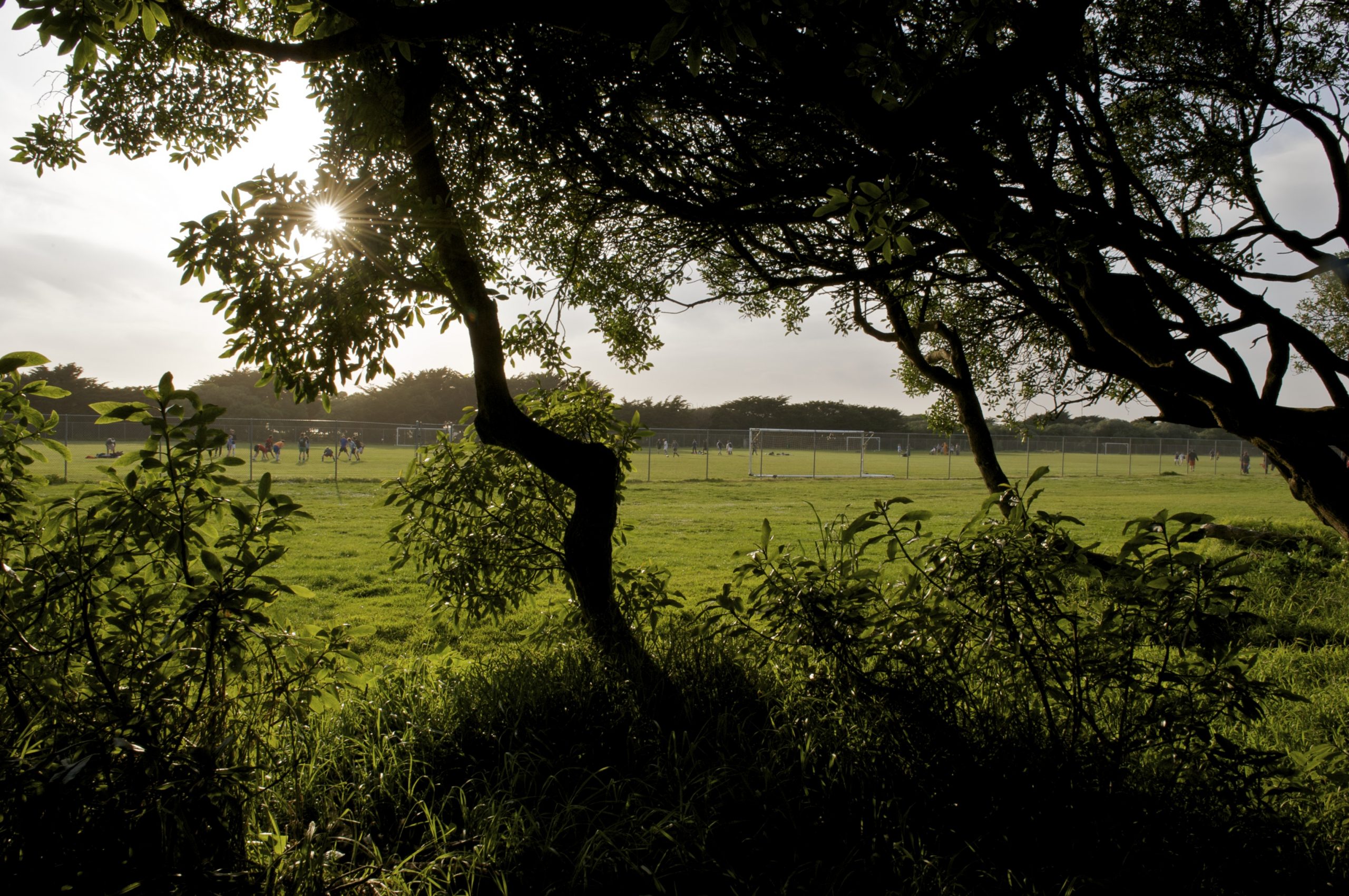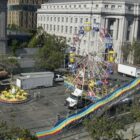A swath of ground at the western end of Golden Gate Park has stirred debate among soccer players, neighborhood residents, astronomers and environmentalists. The disputed turf is the Beach Chalet Soccer Fields.
A plan to replace natural grass with artificial turf lies at the center of a debate over proposed renovations to the fields.
The project is a collaboration between the San Francisco Recreation and Park Department and the nonprofit City Fields Foundation.
On April 30, those plans were put on hold by the Recreation and Park Commission, which called for an environmental impact report.
The commission reversed an earlier vote of approval, which followed numerous public hearings. The call for an environmental impact report came after opponents threatened a legal battle.
The fight centers around the ability of birds to forage and fly in that area of the park and the desire to allow more soccer players to use the fields.
In recent years, the use of artificial turf for athletic fields has increased nationwide, but its rise has also been met with protest due to environmental concerns.
Two years ago, Potrero Hill residents protested a plan to install turf at a city-owned recreation center, citing the potential health risks associated with the chemicals found in the turf’s rubber.
The opposition prompted the city to assemble a Synthetic Turf Task Force to study the effects of turf on players’ health and the environment.
The group’s final report did not recommend a moratorium on artificial turf fields in the city, but it did suggest that each field project be submitted to the Planning Department for review as well as for a California Environmental Quality Act review.
The Golden Gate Park proposal includes artificial turf as well as 60-foot stadium lights and an expanded parking lot. Project designers estimate these changes would allow more people to use the fields, tripling the current numbers.
Opponents of the plan, a coalition led by the Golden Gate Audubon Society, argue that the city does not know the extent of the environmental impacts.
Given that Golden Gate Park’s western edge lies on a flight path for migratory birds, the Audubon Society said the removal of natural grass in the current plans could encroach on the available foraging area for many species. Audubon Society Conservation Director Mike Lynes said he hopes the city will address these concerns in the review process.
“We expect at minimum there would be mitigation required,” Lynes said.
The decision to postpone the project for an environmental review is expected to delay it by at least a year, according to the Recreation and Park Department. Soccer players say the artificial turf will be a significant improvement on the grass at Beach Chalet, where gopher holes pose a risk of tripping and injury.
“Kids will continue to get hurt,” said Shelli Meneghetti, director of the San Francisco Vikings Youth Soccer League.
Every year, one in four fields is closed for grass to grow back. For the proposed Beach Chalet renovations, City Fields, a nonprofit created by the sons of Gap founder Don Fisher, would provide $5 million to the city, with $7 million in voter approved bond money funding the rest.
Patrick Hannan, a City Fields spokesman, said the renovations will use materials suggested by the 2008 Synthetic Turf Task Force to avoid the presence of heavy metals or any other toxic materials in the artificial fields. City Fields estimates the city could save 1.5 million gallons of water a year from not having to irrigate grass fields, and the group claims the city could see a 75 percent decrease in maintenance costs.
The increased lighting at the fields has also been a contested issue. The illumination could disrupt the annual migration of numerous bird species, according to the Audubon Society. Local astronomers have also expressed concerns about the potential effect of light pollution on stargazing.
The Planning Department’s Historic Preservation Commission held a hearing in April about how the renovations could upset the historic nature of the park, a site listed on the National Register of Historic Places.
“Golden Gate Park is one of the city’s most important public and historic resources,” said Courtney Damkroger, vice president of the Historic Preservation Commission.
Katherine Howard of SF Ocean Edge, a community group organized against renovation plan, said although they weren’t opposed to artificial turf, residents didn’t want the renovations made at the west end of the park.
Mark Buell, president of the Recreation and Park Commission, said he hopes the environmental review process will find a plan that environmentalists and the soccer community can support, but he understands how difficult finding that common ground can be.
“Golden Gate Park is many things for many people. I don’t think there is a vision that this is just an environmental sanctuary or just a place to play sports,” he said.
A version of this article was published in the summer 2010 pilot edition of the San Francisco Public Press newspaper. Read select stories online, or buy a copy.








